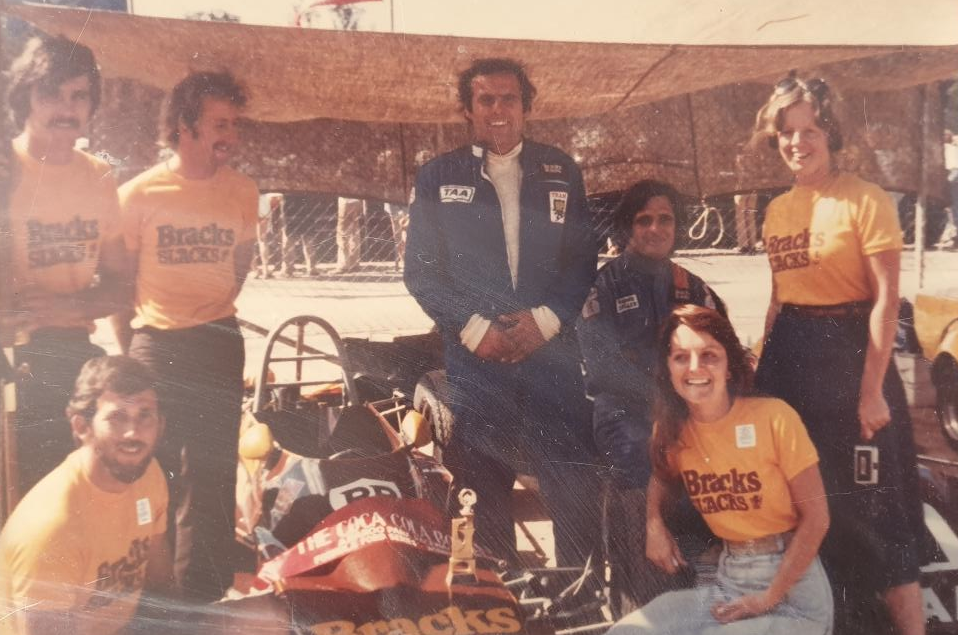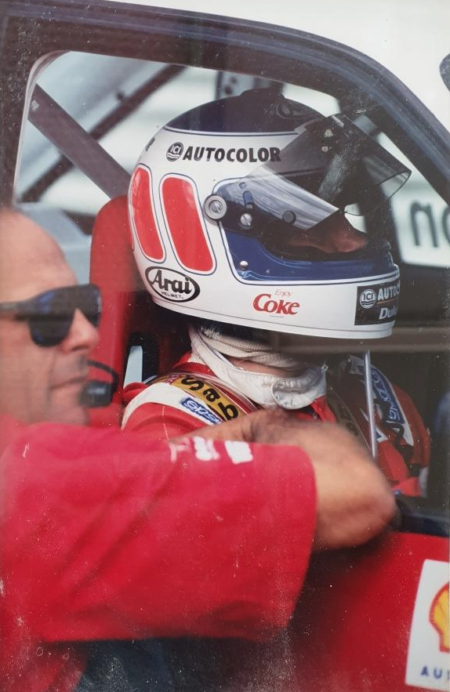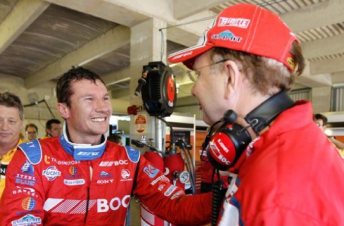

For the last four decades, Wally Storey has been intrinsically linked with Australian motorsport, first as driver before becoming an important figure within the Supercars paddock.
A Formula Ford competitor himself in his early years, he reckons he’s been preparing race cars in some form or another since 1980.

He credits his rise to the top of the sport in Australia to others, guys like Dave Mawer (father of Bart), Peter Molloy, Bruce Carey, and Frank Gardner.
The quartet crossed paths in a workshop run by Mawer, a melting pot of sorts for like-minded motor racing people.
It laid the foundations for a career that would see Storey run Elwyn Formula Fords, work with a young Jamie Whincup, engineer Jason Richards, and develop Brad Jones Racing into a pit stop powerhouse.
Having spent the better part of a decade preparing Formula Fords, Storey’s top tier career began in 1990 when he joined the Holden Racing Team.
“I was tuning cars for people, and I bumped into (Neil) Crompton a few times,” Storey recounted to Speedcafe.com.
“Then, when Holden Racing Team was starting, he suggested I might be a reasonable engineer, although all my family was in Sydney, I wasn’t that keen to move.
“For various reasons I ended up there. And, I suppose from there, it’s relatively modern history.”

It saw him join Win Percy, who Tom Walkinshaw appointed as team manager, to set up a small team.
“He didn’t want a huge scale place, he only wanted a small scale team at the time, just the toe in the water, if you know what I mean,” Storey says of Walkinshaw’s early vision.
“There was myself and three other people in the chassis department eventually.
“I got two blokes that used to drive the truck as well as the mechanical work, and two engine guys.
“That was the sum total of everybody in the place.”
In the squad’s first season it fielded a Holden VL, adding a second car (built by Larry Perkins) to the stable for Bathurst.
That year they won Bathurst with Percy and co-driver Allan Grice, while Crompton and Brad Jones finished fifth in the sister car.
It was a significant result for Holden, which had comparatively struggled in Group A competition, a regulation set which didn’t especially suit the Australian manufacturer.

Rules stipulated that a specific number of cars needed to be sold in order for it to be eligible for Group A.
With a small market in Australia, it was a significant task for Holden.
“Holden Motorsport at that stage was three people, I think,” Storey recalled.
“On the weekend, they shut the plant, the line, down to build the cars.
“So they ran body shells through that way, which was the easiest thing for them to do. Everything that was out of whack had a big red cross on it, so it didn’t get mixed up.”
Storey was an instrumental figure in the development of the VL, but as his career progressed he would play similarly important roles with drivers too.
More than a decade after winning Bathurst with HRT, Storey was working for Tasman Motorsport and had a front row seat for the early years of Jamie Whincup’s career.
He was also a key lieutenant for Jason Richards, whom he describes as “an exceptional human being”.
“I’ve worked with a lot of drivers, gifted drivers, and they’re all different, obviously, in a lot of ways,” Storey said of the Kiwi.
“But I would say that Jason was just like, he was a guy who just made you look good; obviously, he was just a guy with a gift.
“What he couldn’t understand was why everyone couldn’t do it.
“If you’d seen him with the cancer and the way he put up with it, no bleating and groaning, and how hard he fought it, his talent as a driver was minuscule compared to his qualities as a human being.
“He was something else. He was one in a zillion, in my opinion.
“There are plenty of drivers with that talent, I suppose, I just haven’t come across them, but I certainly have come across a few.
“I can tell you at one stage, at Tasman, we had Jamie Whincup in the same car, and they were virtually identical.”
What would ultimately split the pair was Whincup’s decision to accept an offer from Roland Dane to join Triple Eight Race Engineering, a move that had a healthy helping of political undertones.
For 2009 Richards joined Brad Jones Racing, on the advice of Storey after the squad’s eponymous owner asked what was needed to take his operation to the front.
“You don’t get in this game (Supercars) without being f**king good,” Storey reasoned.
“But if you want to win one of these things, you need exceptional. You need extraordinary. ‘Really good’ isn’t cutting the mustard. The whole category’s full of good ones. You need an exceptional or extraordinary one.
“Jason was (exceptional). I think he was third or something or fifth or something at Adelaide with a misfire or something shit itself in the ignition system.
“Then he was fastest qualifying Commodore at the Grand Prix. He showed straight away that he had it.”
Richards remains something of a favoured son at BJR, where his image still adorns the boardroom.
Storey has made his own contribution to the team, drilling the outfit into one of the slickest pit crews in the business.
After his time at Tasman ended, he joined BJR and surveyed the operation, noting it had all the equipment and facilities it needed to work on pit stops. It was inexpensive time to be found.
“So I thought, ‘Well this is an area of work, because this won’t send us broke’ and it’s so critical in passing people, because on the parity thing – be careful what you wish for, because you just might get it.
“(Parity has) made things so equal now you can’t pass anybody, except in the pit lane.”
BJR had proved strong in the lane when pit stops were introduced, but had faded to the point where they’d lose more positions than they’d gain.
“Occasionally they were fast, but generally they were pretty spasmodic,” Storey said.
“If you look at their result sheet, they lost more places in pit stops than they made. So that tells you that needs work.”

Armed with a video camera, Storey began filming pit stops and reviewing races, gradually whittling the crew down to only those who really wanted to be part of the pit stop process.
The group reviewed pit stop after pit stop, debating and discussing techniques.
“If you want to be successful, (it’s) the old story of two heads are better than one,” Storey reasoned.
“If you’ve got a pit crew, if you’ve got seven or eight blokes, seven or eight heads are better than one.
“If you go in and say, ‘this is what they’re going to do,’ for a start you get them offside, because you’re telling them they’re all dickheads and you know better.
“You’re not saying that, but that’s how it’s interpreted.
“It’s a people thing as much as it’s a practical thing,” he added.
“They have to want to do it, and they have to believe that you want them to do it, and you’re just there to help them get the best out of themselves.
“You’re not there to tell them they’re donkeys and ‘this is how you do it.’”

Ultimately Storey ended up with a well drilled pit crew, a fact which has seen the squad develop a reputation for one of the best squads in pit lane.
That lasts to this day, helped by strong performances in the Pirtek Pit Stop Challenge – though it’s results there were courtesy of reading and understanding the rules as much as pit stop prowess.
After some three decades at the coalface of touring car racing in Australia, Storey is now retired.
Throughout his career he won Bathurst, blooded in champions, and played an instrumental role at a critical time of the sport’s history.
Originally from Sydney and now residing in Albury, there isn’t much Storey hasn’t seen over the years, only some of which could ever be printed.





















Discussion about this post